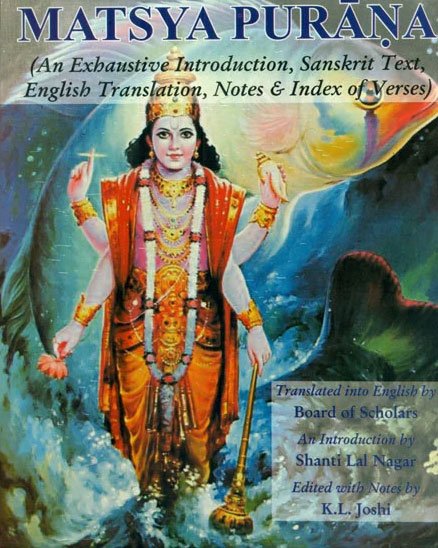The Matsya Purana (critical study)
by Kushal Kalita | 2018 | 74,766 words | ISBN-13: 9788171103058
This page relates ‘Andhaka Dynasty’ of the English study on the Matsya-purana: a Sanskrit text preserving ancient Indian traditions and legends written in over 14,000 metrical verses. In this study, the background and content of the Matsyapurana is outlined against the cultural history of ancient India in terms of religion, politics, geography and architectural aspects. It shows how the encyclopedic character causes the text to deal with almost all the aspects of human civilization.
Part 2.1h - The Andhaka Dynasty
According to the Matsyapurāṇa Bhajamāna, the son of Sātvata begot Viduratha. He had a son named Rājādhideva.[1] Śonāśva and Śvetavāhana were the two sons of Rājādhideva.[2] Śonāśva had five sons Samī, Devaśarmā, Nikunta, Śatru and Śatrujit.[3] They all are experts in war. Samī was the father of Pratikṣatra who has a son named Pratikṣetra. The later was succeeded by his son Hṛdika.[4]
Hṛdika had ten sons:
- Kṛtavarmā,
- Śatadhanvā,
- Devārha,
- Nābha,
- Bhīṣaṇa,
- Mahābala,
- Ajāta,
- Vanajāta,
- Kanīyaka and
- Karambhaka.[5]
Devārha had a son named Kambalavarhiṣa. Kambalavarhiṣa begot Asamañjā. Asamañjā was succeeded by his son Tamojā. On the other hand Hṛdika’s another son Ajāta had three sons viz., Sudanṣṭra, Sunābha and Kṛṣṇa.[6] This dynastic lineage is known as Andhakas.[7]
Footnotes and references:
[1]:
Ibid., 44.77
[2]:
Ibid.,44.78
[3]:
Ibid., 44.79-80
[4]:
Ibid., 44.80
[5]:
Ibid.,44.81-82
[6]:
Ibid., 44.78-84
[7]:
Ibid.,44.85
